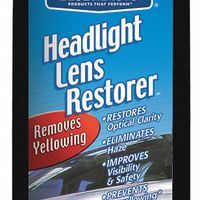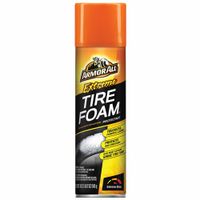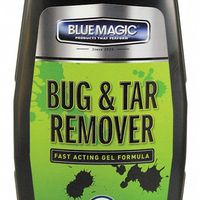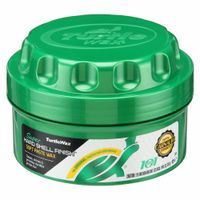Call +(254) 703 030 000 / 751 483 999 / 721 704 777
- Home
- Fleet Vehicle Maintenance
- Vehicle Cleaning Supplies
- Vehicle Exterior Care Detailing
Vehicle Exterior Care & Detailing
Vehicle exterior care and detailing restores and protects automobiles to like-new condition. Vehicle and car wash soaps remove dirt and impacted debris from an automobile's exterior, protecting and maintaining the paint job for long periods of time. Vehicle polishes, waxes, and sealants restore an a .....Read More
Frequently Asked Questions
What is the best car wash soap for protecting paint?
The best car wash soap for protecting paint is often considered to be one that is pH-balanced, contains no harsh chemicals, and includes added conditioners or waxes to enhance the paint's shine and protection. One of the top choices among car enthusiasts and professionals is Meguiar's Gold Class Car Wash Shampoo & Conditioner. This product is known for its rich, foaming lather that gently cleans without stripping wax protection. It contains conditioners that enhance the color and clarity of the paint, leaving a glossy finish.
Another excellent option is Chemical Guys Mr. Pink Super Suds Car Wash Soap. It is pH-neutral, making it safe for all paint types and wax coatings. Its advanced foaming technology lifts dirt and grime without scratching the surface, ensuring the paint remains protected.
For those looking for a soap with added wax protection, Mothers California Gold Carnauba Wash & Wax is a great choice. It combines a powerful cleaning formula with carnauba wax, providing a protective layer that enhances the paint's shine and durability.
Optimum No Rinse Wash & Shine is also highly recommended, especially for those who prefer a water-saving solution. It uses advanced polymers to encapsulate dirt particles, preventing scratches during the wash process, and leaves a protective layer that enhances the paint's appearance.
Ultimately, the best car wash soap for protecting paint will depend on individual preferences, such as the desired level of gloss, ease of use, and environmental considerations. However, choosing a high-quality, pH-balanced soap with added conditioners or waxes will generally provide excellent protection and maintain the vehicle's paint in top condition.
How often should I wax my car to maintain its shine?
To maintain your car's shine, waxing should be done every 2 to 3 months. This frequency ensures that the protective layer provided by the wax remains effective, safeguarding the paint from environmental elements like UV rays, rain, and pollutants. However, the ideal waxing schedule can vary based on several factors:
1. **Climate and Environment**: In harsh climates with extreme sun exposure or heavy rain, waxing every 6 to 8 weeks is advisable. In milder climates, every 3 months may suffice.
2. **Car Usage**: If your car is frequently exposed to outdoor elements or driven daily, more frequent waxing is beneficial. For cars kept in garages or used less often, the interval can be extended.
3. **Type of Wax**: The longevity of the wax also depends on its type. Carnauba waxes typically last about 6 to 8 weeks, while synthetic waxes can last up to 3 months or more.
4. **Paint Condition**: Newer cars with fresh paint may not require waxing as often as older cars. However, regular waxing can help maintain the paint's luster over time.
5. **Washing Frequency**: Regular washing can strip away wax, so if you wash your car often, consider waxing more frequently to maintain protection.
6. **Visual Inspection**: A simple water bead test can help determine if it's time to wax. If water no longer beads on the surface, it's time to reapply wax.
By adhering to these guidelines, you can ensure your car maintains its shine and is protected against potential damage, ultimately preserving its appearance and value.
What is the difference between car polish and car wax?
Car polish and car wax serve different purposes in car maintenance. Car polish is an abrasive product designed to remove imperfections from the car's paint surface. It works by smoothing out scratches, swirl marks, and oxidation, thereby restoring the paint's clarity and shine. Polishing is typically done before waxing to ensure the surface is clean and smooth.
Car wax, on the other hand, is a protective coating applied to the car's surface after polishing. It is not abrasive and does not remove imperfections. Instead, wax provides a protective layer that shields the paint from environmental elements like UV rays, rain, and dirt. It enhances the car's shine and can make the color appear deeper and more vibrant.
In summary, car polish is used to correct and enhance the paint's condition, while car wax is used to protect and maintain the finish.
How can I remove scratches from my car's paint?
To remove scratches from your car's paint, follow these steps:
1. **Assess the Scratch**: Determine the depth of the scratch. If it catches your fingernail, it's likely deeper and may require professional repair.
2. **Clean the Area**: Wash the scratched area with car soap and water to remove dirt and debris. Dry it thoroughly with a microfiber cloth.
3. **Sand the Scratch**: For deeper scratches, use fine-grit sandpaper (2000-3000 grit). Wet the sandpaper and gently sand the scratch in a circular motion until it feels smooth.
4. **Apply Rubbing Compound**: Use a microfiber cloth to apply a small amount of rubbing compound to the scratch. Rub it in a circular motion with moderate pressure. This will help to smooth out the paint surface.
5. **Polish the Area**: After the rubbing compound, apply a car polish to restore the shine. Use a clean microfiber cloth and polish in a circular motion.
6. **Wax the Car**: Apply a layer of car wax to protect the paint and enhance the shine. Use a clean applicator pad and buff with a microfiber cloth.
7. **Touch-Up Paint (if needed)**: For deeper scratches that expose the metal, use touch-up paint that matches your car's color. Apply it with a fine brush, let it dry, and then lightly sand and polish.
8. **Final Inspection**: Check the area in good lighting to ensure the scratch is less visible or removed.
9. **Professional Help**: If the scratch is too deep or extensive, consider consulting a professional auto body shop.
Regular maintenance and protective measures, like using a car cover, can prevent future scratches.
What is the best method for cleaning and restoring headlights?
The best method for cleaning and restoring headlights involves a few key steps to ensure clarity and longevity. Start by washing the headlights with soap and water to remove surface dirt. Dry them thoroughly. Next, use masking tape to protect the surrounding areas of the car's body.
For the restoration process, you can use a headlight restoration kit available in auto stores, which typically includes sandpaper, polish, and a UV sealant. If you prefer a DIY approach, gather materials like sandpaper (in grits of 400, 800, 1000, and 2000), plastic polish, and a UV-resistant clear coat.
Begin by wet sanding the headlights. Start with the 400-grit sandpaper, keeping it and the headlight surface wet to prevent scratches. Sand in a horizontal motion until the surface feels smooth. Repeat the process with 800, 1000, and finally 2000-grit sandpaper, ensuring the surface is consistently wet and smooth after each step.
After sanding, apply a plastic polish using a microfiber cloth. Buff the headlights in a circular motion until they appear clear and shiny. This step removes any remaining haze and restores clarity.
Finally, apply a UV-resistant clear coat to protect the headlights from future oxidation and yellowing. Follow the instructions on the product for best results, usually involving spraying an even coat and allowing it to dry completely.
Regular maintenance, such as washing and applying a UV protectant, can prolong the clarity of the headlights. This method effectively restores headlight clarity and provides long-lasting protection.
How do I clean and protect my car's tires and wheels?
1. **Gather Supplies**: Tire cleaner, wheel cleaner, soft-bristle brush, microfiber cloths, bucket, hose, and tire protectant.
2. **Rinse**: Use a hose to rinse off loose dirt and debris from the tires and wheels.
3. **Apply Wheel Cleaner**: Spray a wheel cleaner specifically designed for your wheel type (alloy, chrome, etc.) and let it sit for a few minutes to break down grime.
4. **Scrub Wheels**: Use a soft-bristle brush to scrub the wheels, focusing on crevices and lug nuts. Rinse thoroughly with water.
5. **Clean Tires**: Apply a tire cleaner to the tires. Use a stiff-bristle brush to scrub the tire sidewalls, removing old tire dressing and dirt. Rinse well.
6. **Dry**: Use microfiber cloths to dry the wheels and tires completely to prevent water spots.
7. **Apply Tire Protectant**: Once dry, apply a tire protectant or dressing to the sidewalls. This helps prevent cracking and fading. Use a foam applicator for even coverage.
8. **Buff**: Allow the protectant to sit for a few minutes, then buff with a clean microfiber cloth to remove excess and achieve a natural shine.
9. **Final Check**: Inspect for any missed spots and touch up as needed.
10. **Regular Maintenance**: Clean and protect your tires and wheels regularly to maintain their appearance and longevity.
What are the benefits of using a paint sealant on my vehicle?
Paint sealants offer several benefits for vehicle protection and maintenance. They provide a durable layer of protection against environmental elements such as UV rays, acid rain, bird droppings, and tree sap, which can damage the paint over time. Sealants are synthetic and designed to bond with the vehicle's paint, creating a long-lasting shield that can last several months, often longer than traditional waxes.
One of the primary advantages is the enhanced gloss and shine they impart to the vehicle's surface, giving it a freshly polished look. This aesthetic improvement can make the car appear newer and more well-maintained. Additionally, paint sealants are hydrophobic, meaning they repel water, which helps in keeping the vehicle cleaner for longer periods. Water and dirt slide off more easily, reducing the frequency of washes needed.
Sealants also offer ease of application compared to some other protective products. They can be applied by hand or with a machine, and they typically require less effort to buff out than waxes. This ease of use makes them accessible for both professional detailers and car owners who prefer DIY maintenance.
Moreover, using a paint sealant can help maintain the vehicle's resale value. By protecting the paint from fading and oxidation, the car retains its aesthetic appeal, which is a significant factor in resale pricing. In summary, paint sealants provide long-lasting protection, enhance appearance, reduce maintenance efforts, and help preserve the vehicle's value.



